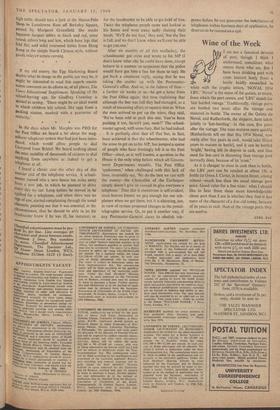Wine of the Week
I AM not a fanatical devotee of port, though 1 think I understand, sometimes, what moves those who are. But I have been drinking port with some interest lately from a bottle boldly enamelled in white with the cryptic letters, 'NOVAL 1954 LBV.' 'Noval' is the name of the (pinta, or estate, from which the port comes, and 'LBV' stands for 'late bottled vintage.' Traditionally, vintage ports are bottled two years after the vintage and matured in bottle. The owner of the Quinta do Noval, and Rutherfords, the shippers, have taken jointly to 'late-bottling'—in this case, five years after the vintage. The wine matures more quickly (Rutherfords tell me that this 1954 Noval, now ready after five years in cask, would take fifteen years to mature in bottle), and it can be bottled 'bright,' having left its deposit in cask, and thus need far less care in decanting than vintage port normally does, because of its 'crust.'
As it is cheaper to store in cask than in bottle, the LBV port can be retailed at about 19s. a bottle (at Owen J. Carter, in Jermyn Street, among others)—much less than the usual vintage port price. Good value for a fine wine: what I should like to hear from those more knowledgeable about port than I am is whether they find it has more of the character of a line old tawny, because of its years in cask, than of the vintage ports they are used to.
CYRIL RAY


































 Previous page
Previous page